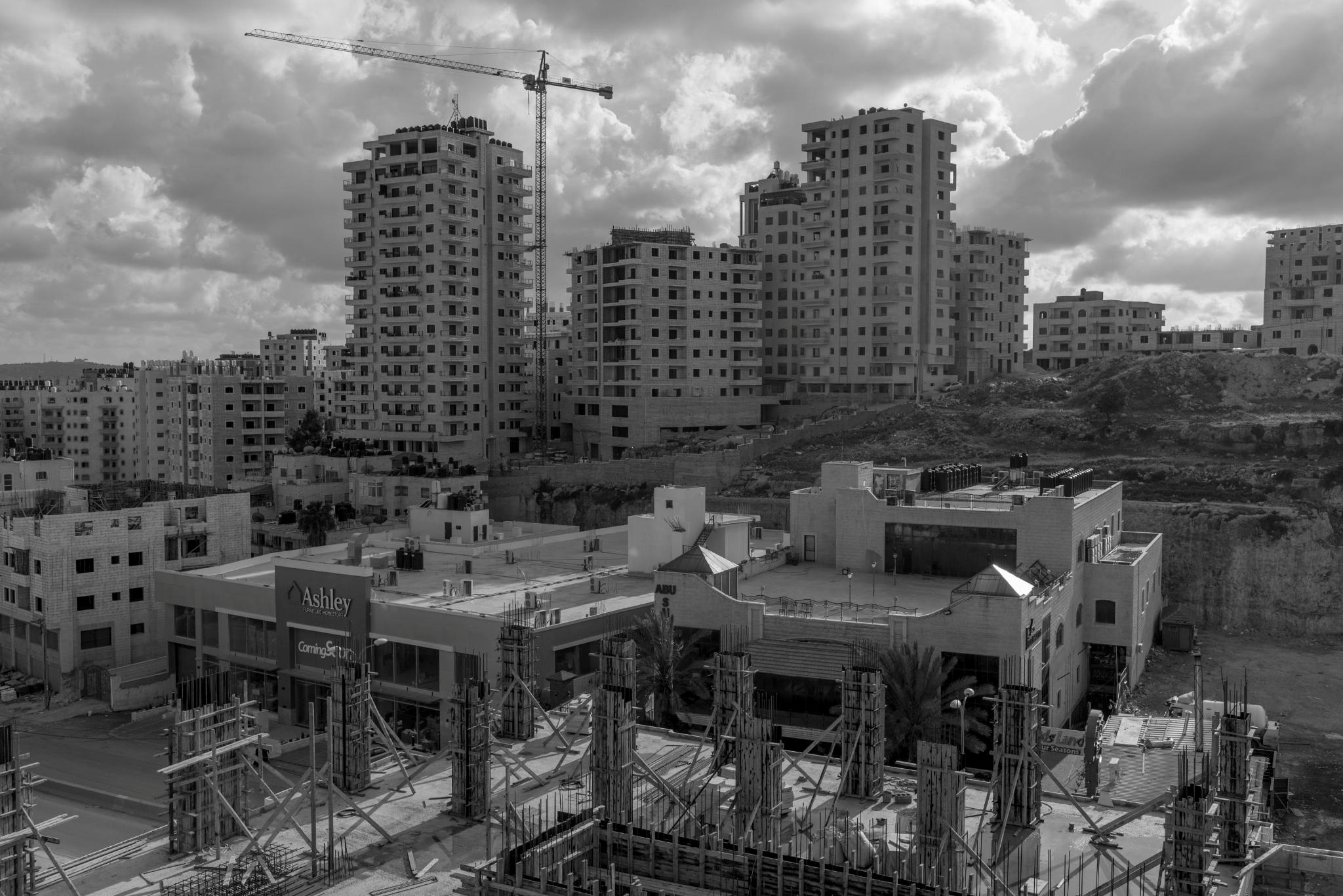In April of this year, a large, new shopping center opened in Ramallah. Called “the ICON,” the 700,000-square-foot mall features 165 international retail stores, a movie theater, an escape room, a pottery painting studio, and a generally upper-middle class orientation. Its lavish ribbon-cutting ignited a controversy. Critics asked: How can we celebrate this when our family in Gaza is being murdered by the hundreds of thousands? The counter argument: Shouldn’t we be allowed to live a little, to even aspire to normalcy?
The Palestinian political theorist Abdeljawad Omar described this aspiration in Freudian terms. For him, the ICON controversy revealed a “hidden desire for shamelessness,” a psychology of accommodation and assimilation in line with the political aims of the Palestinian Authority to normalize the occupation. A piece by the American rightwing Zionist commentator Seth Mandel described the “crux” of the controversy like this: “Statehood and self-determination are not as attractive to these Palestinian activists as is mutual, perpetual misery. Who wants food and jobs when you could have war?” It’s a repulsive argument that hits on a larger structural truth by accident. There are opportunities on offer for Palestinians — for conciliation and class mobility scaffolded by debt and self-abnegation. The other path, presented as if it were a choice, is perpetual state violence and genocide.
It is no mystery why real estate development — including malls as well as large-scale housing — might be a central mechanism for narrowing Palestinian possibility within Palestine: It ties together land, ownership, distribution, and accumulation and deepens the geographies of occupation. It ties the Palestinian people to certain parts of their land in new ways, at the expense of other places and capacities, and it ties the world economy to Palestine.
Rawabi epitomizes this developmentalist strategy. In the works for 15 years, the massive, pre-planned suburb north of Ramallah will eventually house up to 40,000 “middle-class” Palestinians. It was conceived during a shift in global aid administration away from humanitarian or population support, and towards the private sector. The project was envisioned by Bashar Masri, a billionaire Palestinian developer and aid subcontractor with experience in North Africa, along with his allies in the PA and the private sector. Construction has already cost $1.4 billion by some estimates and is primarily paid for by the sovereign wealth fund of Qatar. To transform the geography of the West Bank, Rawabi has reconfigured land registration and tenure, and has relied on eminent domain to create and clear ownership titles in order to inaugurate a possibility for a mortgage market backed by international aid.
Palestinians have historically been loath to take on long-term home ownership debt, both because of high rates of family and collective ownership, and because life in occupied Palestine is structured by insecurity, opacity, and instability. But new mortgages that underwrite new housing development bind Palestinians to new forms of home and homelife. They produce new geographies in Palestine, luring people to places outside of existing population centers and inventing new forms of financial speculation in land. They recruit Palestinians into alignment with the PA, stratifying class distinctions and offering a form of stability that flows through the occupation and polarizes Palestinian people against resistance. Normalization is built on the aspiration for normalcy.
In this sense, engineering middle-class housing and possibility in narrow parts of the West Bank dovetails with Israel’s goals and is inseparable from its current genocide. These narrow openings are part of the same project to control and eradicate all forms of Palestinian life. Well over a year ago, Israel had already destroyed or catastrophically damaged 60% of homes in Gaza, and the UN Special Rapporteur on the Right to Adequate Housing, Balakrishnan Rajagopal, deemed its campaign a “domicide.” The leveling continues, while the Israeli cabinet officially names its goals: annihilation and ethnic cleansing.
Financial speculation is as bound up with Israel’s genocide in Gaza as it is with large-scale mall and housing development in the West Bank. In Gaza, the question of land rent — the difference between the current value and speculative future value, the same phenomenon at the heart of gentrification in American cities and elsewhere — is an outcome of destruction, displacement, abandonment, and murder, perpetrated by Israel and the U.S. “Think of it as a big real estate site,” Donald Trump said of Gaza, “and the United States is going to own it.”
As Israel expands its genocidal campaign to the West Bank, the connections between the spatial strategies deployed by soldiers and settlers become clear. The entity’s territorial ambitions for the region require shrinking and isolating islands of stability within it. Fulfilling the fantasies of its revanchist cabinet, illegal settlers and the occupation forces have murdered and displaced thousands of Palestinians and destroyed as many homes, most prominently in Tulkarm and Jenin. Deprivation in Gaza and allowance around Ramallah — domicide and development — are parts of the same whole: to eradicate Palestinian life on Palestinian land.
This piece appears in the eighteenth issue of The New York War Crimes, out July 4, 2025.


